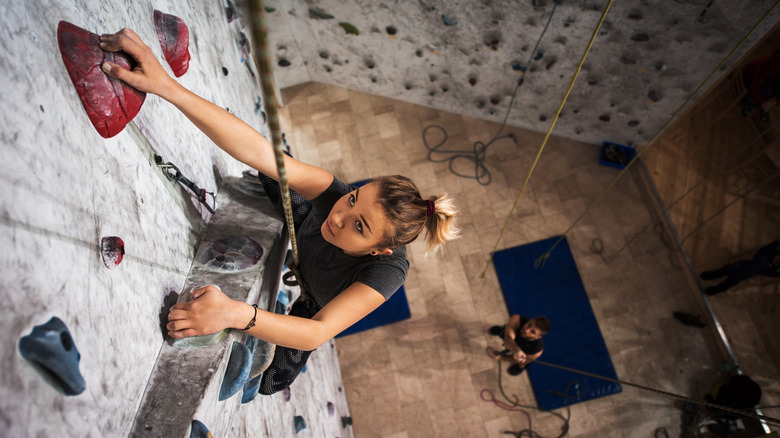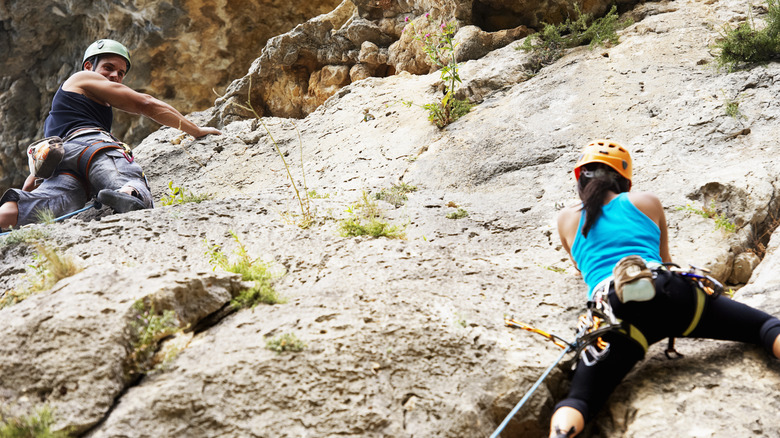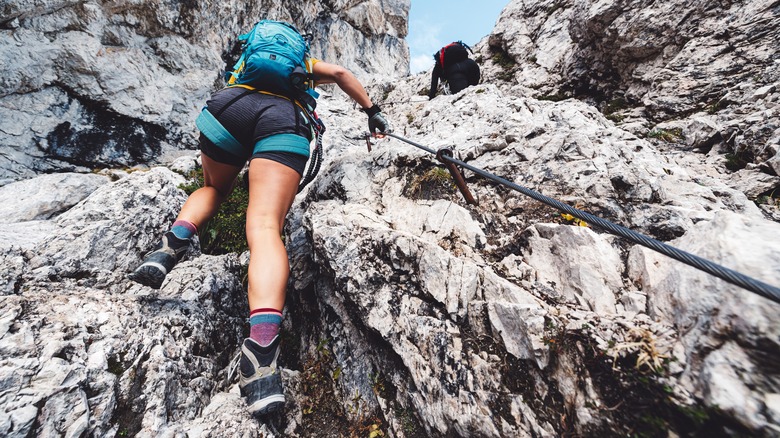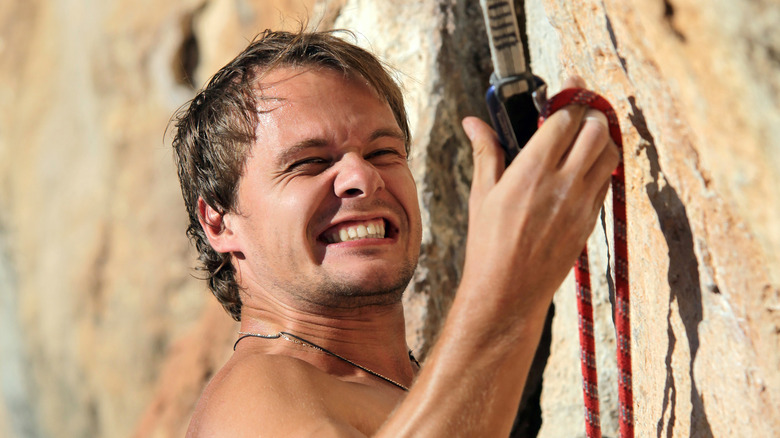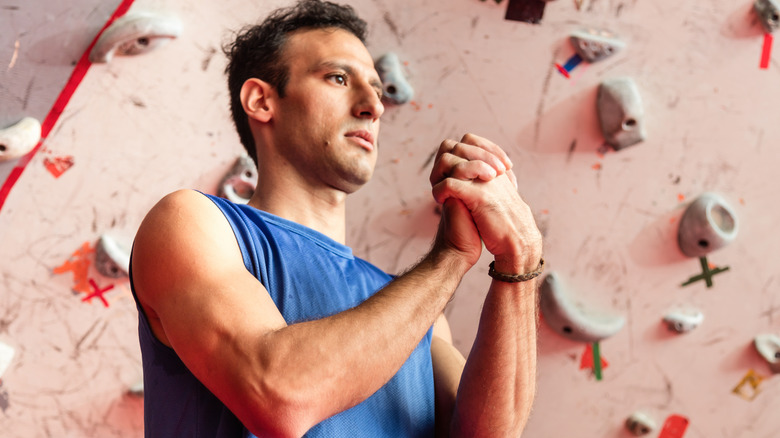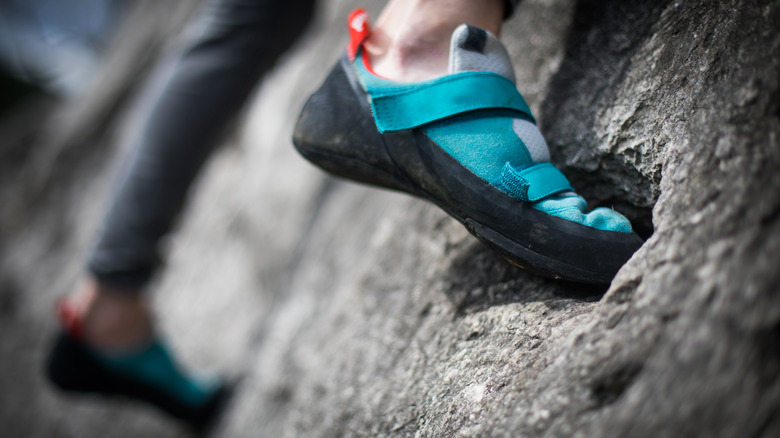5 Big Mistakes Novice Rock Climbers Make
Rock climbing, with its promise of adventure and adrenaline, beckons enthusiasts to ascend vertical walls, sheer cliffs, and rugged crags in pursuit of new heights. It's a sport that captivates the imagination, offering a thrilling blend of physical challenge and mental fortitude. Yet, amidst the excitement of scaling upward terrain, novice climbers often find themselves unwittingly stumbling into pitfalls that can hinder their progress and compromise safety. The allure of the climb, coupled with the eagerness to conquer new challenges, can sometimes overshadow the importance of careful preparation and technique.
In this article, we explore beginner mistakes in rock climbing. From subtle missteps to glaring oversights, we delve into the common errors made by those just beginning their ascent in this exhilarating sport and have some pro tips to help new climbers navigate the rocky path to proficiency and success. So, chalk up your hands and prepare to uncover the five biggest mistakes that novice climbers make so that you can stop making them or, better yet, avoid them altogether.
Climbing every day
Novice climbers often fall into the trap of climbing too frequently without giving their bodies enough time to rest and recover. While the enthusiasm for the sport is commendable, this relentless pursuit can have detrimental effects on both physical performance and overall well-being. Climbing every day can quickly lead to muscle fatigue and exhaustion, depriving muscles of the opportunity to repair and strengthen adequately. Consequently, the risk of overuse injuries such as tendonitis and muscle strains escalates, compromising technique and increasing the likelihood of accidents on the wall.
In their zeal to improve, beginner climbers often overlook the importance of diversified training. It's a common misconception that climbing alone will improve climbing performance when, in fact, the opposite is true. A holistic approach to training is paramount for sustainable advancement and injury prevention. Lattice Training recommends incorporating other forms of strength and endurance training to ameliorate endurance and technique when climbing. Cross-training activities like weightlifting, yoga, or cardiovascular exercises cultivate essential attributes such as strength, endurance, and flexibility, which are fundamental for climbing success.
Holds and Walls recommend aiming for three sessions per week with rest days interspersed to allow for full recovery. Avoiding consecutive climbing days optimizes muscle recuperation and performance. If progress stalls or climbers find that they aren't as sore after sessions on the walls, then gradually increasing climbing frequency over time can reignite advancement.
Only looking up
While it's instinctive to fixate on the ultimate goal of reaching the top, novice climbers frequently overlook the importance of maintaining a comprehensive awareness of their surroundings. Focusing solely on upward progress neglects crucial aspects of climbing technique, particularly regarding foot placement and body positioning. Your feet are the foundation of your climb, providing stability and support to propel you upward efficiently. Ignoring them in favor of gazing upward can result in missed opportunities for secure footholds and balanced body positioning, ultimately hindering your progress and increasing the likelihood of slips or falls.
Moreover, the habit of only looking up limits your ability to plan your route strategically. Climbing routes often feature intricate sequences of handholds and footholds that require careful consideration and planning. By maintaining a broader awareness of your surroundings — including potential handholds, footholds, and route variations — you can optimize your climbing strategy and adapt more effectively to unexpected challenges or route changes.
So, what's the proper way to look while climbing? The key is to adopt a more expansive and dynamic visual approach. Rather than fixating solely on the next hold or the top of the route, Lattice Training states that climbers should actively scan their surroundings from top to bottom and side to side. By integrating this panoramic perspective into your climbing technique, you can enhance your ability to plan ahead, identify optimal hand and foot placements, and navigate the route with greater efficiency and confidence.
Using bent arms
Novice climbers often fall into the trap of relying too heavily on their arm strength, neglecting to utilize their larger muscle groups effectively. This leads to bad practices like climbing with bent arms. While it may feel instinctive, comfortable, or safer, climbing with bent arms can significantly compromise your climbing performance and increase the risk of injury. This is because climbing with bent arms places excessive strain on the forearm muscles, leading to premature fatigue and reduced climbing efficiency (via Inspire Rock). By relying solely on your arm strength to pull yourself upward, you're neglecting the powerhouse of your lower body — the legs and core.
The proper technique involves keeping your arms straight whenever possible, using them primarily for balance, stability, and controlled movement. Instead of pulling yourself up with your arms, focus on using your legs to push and propel yourself upward while your arms provide support and guidance. This not only distributes the workload more evenly throughout your body but also allows you to take advantage of the stronger and more fatigue-resistant leg muscles.
To avoid falling into the bent arms trap during climbing or training, climbers should keep their bodies close to the wall. Hips and center of gravity should be aligned with the intended direction of movement. This helps minimize the tendency to over-rely on arm strength. Visualization techniques can also be helpful in reinforcing this habit. Climbers should envision themselves climbing a route with straight arms during the route planning stage of their training.
Warming up ineffectively
What does "ineffective" mean in terms of warming up for climbing? An ineffective warm-up typically involves minimal or no preparation before climbing or performing static stretching exercises without incorporating dynamic movements. This approach fails to adequately increase blood flow to the muscles, raise core body temperature, and activate the neuromuscular system — all of which are essential for optimal climbing performance and injury prevention.
When warming up for climbing, it's essential to target specific muscle groups that are heavily engaged during climbing movements. These include the forearms and grip muscles, which benefit from dynamic wrist and forearm stretches, finger exercises, and light grip strengthening exercises to prepare for the demands of gripping and pulling on holds. Similarly, mobilizing and stabilizing the shoulder joints through shoulder rotations, arm circles, and scapular activation exercises helps reduce the risk of shoulder injuries common in climbers. Engaging the core muscles with dynamic core exercises such as leg lifts, bicycle crunches, and plank variations provides stability and support for climbing movements, while dynamic leg swings, lunges, and squats activate the leg muscles, improving blood flow and flexibility for efficient footwork and pushing movements.
Additionally, Backcountry recommends starting the climbing session with easy routes. Ideally, climbers should perform an easy route back-to-back without tiring themselves out in order to acclimate to the movement patterns on the wall, emphasizing smooth and controlled movements. Following this, climbers should scale a wall that is at or near their level, which will get them pumped for the rest of their session.
Wearing the wrong shoes
Many beginners start their climbing journey wearing generic athletic shoes or sneakers. This choice is often driven by convenience and familiarity, as these shoes are readily available and may already be owned by the climber. Additionally, beginner climbers may perceive climbing shoes as an unnecessary expense, especially if they are not yet fully committed to the sport.
However, wearing generic athletic shoes for climbing can pose several challenges. Unlike climbing shoes, which are specifically designed for the demands of climbing, generic athletic shoes lack the specialized features necessary for optimal performance on the wall. They typically have thicker soles, less precise edging capabilities, and less sensitivity, which can make it difficult to feel and utilize footholds effectively. Furthermore, the lack of snugness and support in generic athletic shoes can lead to foot fatigue, discomfort, and instability while climbing.
On the other hand, investing in quality climbing shoes offers numerous benefits, prioritizing performance and functionality over comfort and versatility. Designed with a snug fit and sticky rubber soles, climbing shoes provide optimal support, sensitivity, and grip on small footholds, enhancing overall performance and confidence on the wall. Their downturned shape, asymmetrical design, and specialized materials cater to different climbing styles and terrains, promoting toe power, precision, and stability during dynamic movements. Unlike generic athletic shoes, climbing shoes excel in maximizing climbers' performance and connection to the rock surface.
